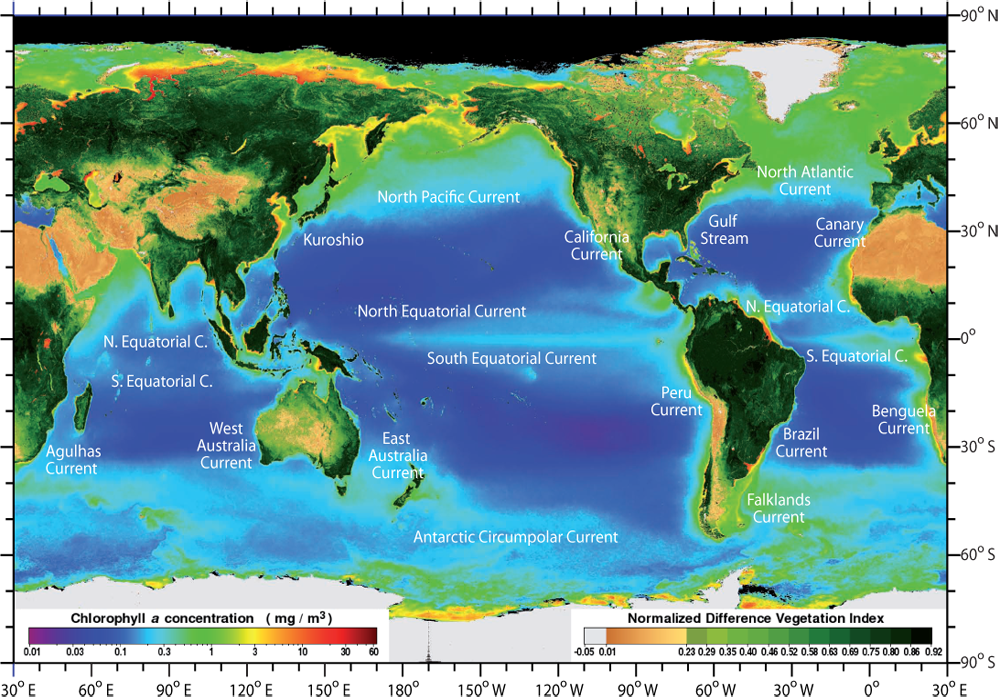4. Ocean Deserts
Subtropical deserts - land and sea
Maps of global vegetation produced from satellite data show clearly areas of little or no vegetation on land and in the sea. The maps are based on the amount of chlorophyll present - over land the red and near infrared wavebands are used, whilst over the ocean, blue and green.
More about how vegetation can be monitored by satellite in the SEOS tutorials on Ocean Colour in the Coastal Zone and Remote Sensing and GIS in Agriculture.
Microscopic marine plants
Near the surface water, microscopic marine plants - the phytoplankton - live in the sunlit zone, and carry out photosynthesis. The phytoplankton are the grass of the sea, and the bottom of the marine food-chain.
Like all plants, however, they require not just water, carbon dioxide and light in order to grow, but also need nutrients such as nitrate, phosphate and other minerals. These are in always short supply, and soon used up in the building and growth of plankton cells.
It is the chlorophyll inside the phytoplankton cells that can be measured by satellite instruments.

Not much rain in the subtropics
In the atmosphere semi-permanent subtropical high-pressure systems are centered at about 30 degrees latitude. They bring clear, dry air, with virtually cloud free skies, and little in the way of rain. The result is a subtropical desert so dry that they are unsuitable for all but the most specialised of plants, where rain falls only rarely - sometime less than once a year.
Not much wind either
From a biology point of view, the interiors of the large subtropical gyres are like ocean deserts, and they occur at about the same latitude as the large deserts on land.
The ocean deserts are also caused by the subtropical high pressure systems, but result not from an absence of rain, but from a lack of plant nutrients in the surface waters brought about by solar heating, and an absence of strong winds.

